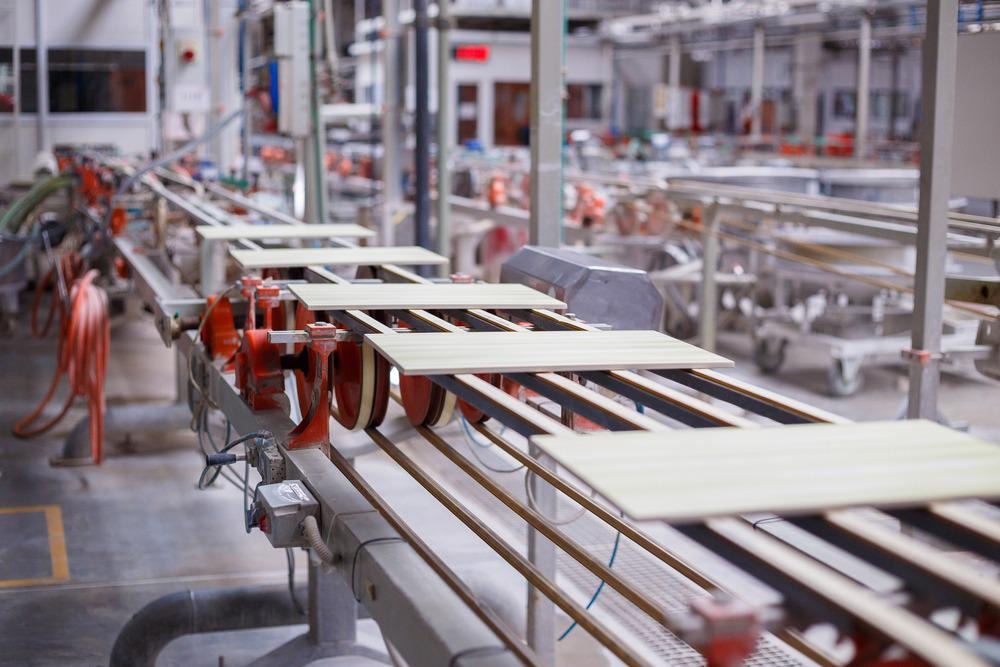Manufacturers are increasingly looking to ceramic materials and coatings to achieve the hardest and most durable surfaces for mining equipment.

Image Credit: Roman Dombrowski/Shutterstock.com
Properties of Ceramics
Ceramics are inorganic, non-metallic, porous, and have a crystalline structure. Non-crystalline materials with similar properties to ceramics are classed as glass, although when they take on the crystalline structure due to heat treatment, they are known as glass-ceramics.
Ceramic materials’ mechanical properties make them attractive to mining equipment manufacturers. They have high degrees of hardness and compression strength, can withstand chemical erosion and are resistant to extremely high temperatures.
Ceramics are also brittle and weak in tension and shearing. These mechanical properties must also be considered when introducing ceramic material to mining equipment.
Ceramic Machinery
Traditionally, machinery was made of steel and iron. These are hard, strong materials that are relatively simple to produce in proper forms.
In recent years, however, ceramic equipment has developed significantly, and this material is now in use in mining applications.
Due to high tensile strength and good thermal conductivity, ceramics make excellent cutting and abrasion-resistant materials. Ceramics have also become particularly popular as composite materials for mining equipment.
Ceramic-based machinery is typically manufactured with die pressing and sintering methods. Industrial ceramics are usually alumni or silica-based.
Benefits of Ceramics for Mining
Mines lose money by the minute when they are not operating due to a blown pipe or a chute hole. In some industries, losses can reach as much as $180,000 for each hour that a mine is not working.
One way to reduce downtime is by ensuring that rocks will not damage chutes and pipes in mining equipment and other material landing on them or being transported through them. This can be achieved with ceramic coatings.
Abrasive materials damage piping equipment with everyday wear and tear. Even when the equipment holds up for an entire shift, it still requires extensive inspection and maintenance to keep working well. Ceramic coatings also reduce maintenance costs.
Ceramic coatings or composites are well suited for these applications due to the high abrasion resistance of the material. As a general rule, ceramic will exceed the operable lifetime of steel by about ten times.
The Next Generation of Ceramics for Mining Equipment
The next generation of ceramics for mining equipment will be even harder. Advances in ceramic materials have led to their application in a wide range of settings previously considered too rugged or demanding for their relatively low shear strength to withstand, such as tooling for metalworkers.
New coatings are being developed to make ceramics even more complex and durable. Titanium aluminum nitride is one example that enables thermal control.
The recent development of ceramic matrix composites (CMCs) will likely make ceramic coatings even more effective in the coming years.
CMCs dramatically improve pure ceramics’ material properties, making them more resistant to shearing forces. CMCs are also low weight, high strength, high temperature resistant, and chemically inert materials that can be employed in hostile or corrosive environments without degrading.
These properties have led to CMCs primarily being used in aerospace applications. Multiple hostile working environments, including heat engines, nuclear reactors, and turbine blades, have recently been introduced to CMCs.
The rapid development of the material will also lead to a much wider range of applications in the future, including for mining equipment.
Making Mining Viable
The mining industry worldwide has to respond to the challenge of extracting enough material from depleted resource deposits to make mines commercially viable. The key to retaining competitiveness in this market is ensuring maximum efficiency for mining operations, both in terms of operational efficiency and cost.
Mining firms can achieve this by ensuring their equipment will last as long as possible, for the best price possible, and with as little maintenance as possible. This is why ceramic coatings are making their way into next-generation mining equipment: they present a fundamental value proposition due to the reduced maintenance and replacement costs.
They also make mining more profitable by minimizing operation occurrence and preventing faults or damage during the working shift.
Another way for mines to compete against the pressures of depleted resource deposits and our sustainability goals is by making better use of waste or unwanted material.
Recent studies have shown that mining waste can be used for manufacturing new ceramics, possibly even ceramics that will eventually appear in mining equipment themselves.
Ceramics will play an essential role in the future of mining – ensuring reliable operations, minimizing waste, and making mines viable.
References and Further Reading
Carroll Technologies (2019). How mining industrial ceramics improve efficiency and safety. [Online] Mining Technology. Available at: https://www.mining-technology.com/sponsored/mining-industrial-ceramics/ (Accessed on 21 April 2022).
Pilkington, B. (2019). How are Ceramics Used in Construction? [Online] AZO Build. Available at: https://www.azobuild.com/article.aspx?ArticleID=8367 (Accessed on 21 April 2022).
Pomeroy, M. (2021). Encyclopedia of Materials: Technical Ceramics and Glasses. [Online] Science Direct. Available at: https://www.sciencedirect.com/referencework/9780128222331/encyclopedia-of-materials-technical-ceramics-and-glasses (Accessed on 21 April 2022).
Taylor-Smith, K. (2019). Producing Ceramics from Mining Waste. [Online] AZO Mining. Available at: https://www.azomining.com/Article.aspx?ArticleID=1524 (Accessed on 21 April 2022).
Disclaimer: The views expressed here are those of the author expressed in their private capacity and do not necessarily represent the views of AZoM.com Limited T/A AZoNetwork the owner and operator of this website. This disclaimer forms part of the Terms and conditions of use of this website.